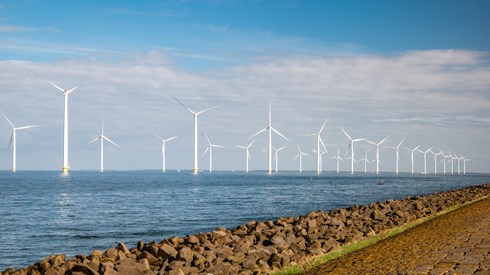Captives May Play an Important Part in Meeting Parents' ESG Goals

November 14, 2022

Captive insurance companies' potential role in addressing environmental, social, and governance (ESG) issues and sustainability challenges is an untapped opportunity, a new report suggests.
The Aon report, titled Using a Captive Insurance Company To Drive Positive ESG Outcomes, suggests that captives are a "natural nexus" between global financial systems and the broader economy.
As licensed and regulated insurance companies, captives have many of the same expectations placed on them as commercial insurers and other financial institutions, the report says. But captives' unique status in primarily meeting the risk financing needs of their parent or the members of their group puts them in a unique position in addressing ESG risks, according to the report.
"Although there are variations on the traditional captive definition including group captives and protected cell companies, all types of captives can generally take a more micro view of ESG risks at a particular organization compared to a traditional insurer," the report says.
A captive insurance company's role as an expert underwriter for its parent is another important element in captives' potential role in the broader sustainability discussion, the report suggests.
"Having its portfolio limited to the parent organization gives the captive's underwriters a closer look at the specific actions taking place at business unit level within the parent," the report says. "That allows underwriters to mitigate ESG risks and promote sustainability. Traditional insurers, on the other hand, typically rely on disclosures, ESG ratings agencies, and other assessments across entire economic sectors or lines of business."
Aon notes that studies have shown that, on average, organizations prioritizing ESG and related sustainability initiatives achieve better corporate results. At the same time, organizations that are more proactive in addressing ESG will better understand the risks and rewards associated with ESG metrics than other organizations.
"Captives can play a crucial role through establishing a framework to assess and measure the inherent risks that ESG introduces to the parent," the report says.
Some ESG risks are currently uninsurable, the report notes, and, without sufficient data, it's unlikely that insurers will offer coverage for those exposures until sufficient experience is gathered. "This is not uncommon for emerging risks," the report says.
According to the Aon report, ESG represents a combination of existing risks with new characteristics along with some novel risks. But embedding ESG in a captive insurance strategy can require incorporating new metrics and measurement techniques for existing risks, the report says.
"It is reasonable that the captive, as an expert underwriter for the parent organization, should take a leading role in the inclusion of relevant new metrics in the risk assessment processes and apportion risk capital to these risks," the Aon report says.
"By using the captive as a means to apply underwriting discipline on the risks, the parent organization can typically develop a better understanding of the underlying characteristics of the risk and begin the process of building a means to manage the inherent volatility through the application of insurance accounting principles, while also improving risk management and reporting practices," the report says.
A captive can also play a part in driving behavior change within its parent, in some cases accelerating needed transitions through its ability to apply risk management techniques, the report says.
The Aon report sets out four pillars under which ESG can be embedded in a captive's business model: underwriting, investment, risk management and risk improvement, and societal resilience and transition support.
In the underwriting area, incorporating ESG would create an awareness of downside risks associated with failing to meet targets or undertaking a full ESG risk assessment. Incorporating ESG into the captive's underwriting will lead to considering ESG in capital adequacy decision-making, modeling, and analytics, and to appropriate metrics, the report says.
"The ESG metrics to be incorporated into the captive's underwriting processes should reflect the organization's ESG focus areas," the report says. "Early adopters of this approach have used metrics associated with the parent's [Sustainability Development Goals] such as carbon intensity, water usage, and plastic production." The captive can then use those ESG metrics alongside traditional underwriting metrics to set premiums.
Under the investment pillar, the captive can seek green investment opportunities and invest in sustainable investment funds, according to Aon. "An organization that embraces these opportunities in its sustainable captive—even if it is gradual initially—will not only create a better financial alignment between the liabilities and the assets of the captive but will also have a captive that genuinely supports their overall sustainability goals," the report says.
In the risk management and risk improvement area, the captive insurance company, as expert underwriter for the parent, should promote continuous risk improvement through such mechanisms as intelligent data use and strategic pricing, the Aon report says. "Many captive parent organizations use all or a combination of these measures to greatly affect the risk maturity across the enterprise," the report says. "Applying the same behaviors and techniques to the risks associated with ESG will help lead to similar outcomes."
In terms of societal resilience and transition support, captives could potentially support the parent company's ESG efforts in providing insurance to underserved segments of society, Aon says. "This has been successfully deployed by a small number of captive owners in recent years and could be included as part of the captive's broader ESG strategy," the report says.
Alternatively, captive insurance companies could donate a portion of their annual profits to support premiums for insurance to help close protection gaps, Aon suggests.
"Each of the areas in which ESG can be embedded represents an opportunity for captive owners to improve the organization's ESG risk position on a sustained basis," the Aon report says. "The opportunity for each of the areas to be aligned around a dominant ESG theme may enable the captive to become an important agent for continuous ESG improvement."
November 14, 2022



